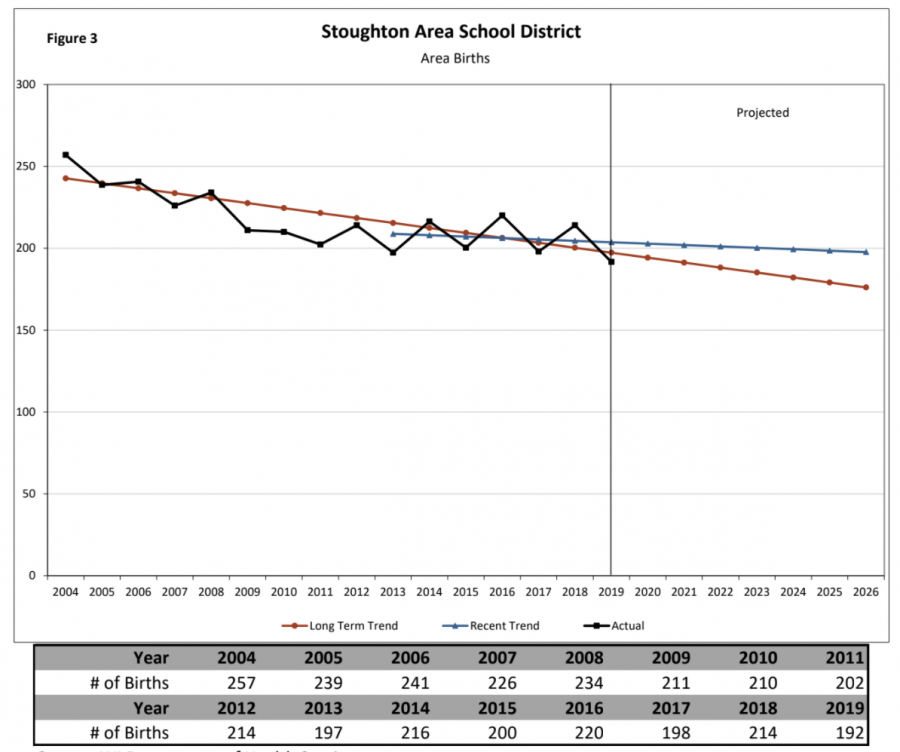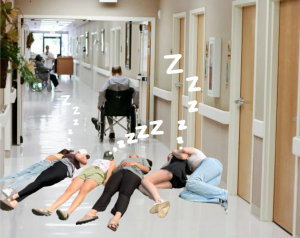SASD Faces Declining Enrollment
February 24, 2021
Do you feel like programs, clubs, and athletics are getting smaller each year? You’re not alone. Sarah Kemp, school demographer at the Applied Population Laboratory at UW-Madison, has been providing enrollment projections for SASD every two years since 2005.Through her research, she’s been able to make some predictions about the future of the Stoughton Area School District. According to Kemp, in five years the district may expect an average of a 7% decline in 4K to 12 enrollment. Grades 9 to 12 are projected to decrease 16.5%, by 136 to 170 students.
The fewer students a district has, the less funding the state provides. Kemp states, “Because state funding is tied to enrollment, increased enrollment means increased funding, which in turn means more dollars for school programming.” With a lack of funding, it is harder to maintain a district. Frank Sullivan, School Board President, says, “It’s harder to fill the football team, for example, when you don’t have as many people to play football. It’s harder to fill the marching band. Some of the activities that don’t have as many people in them are going to have even fewer people to draw from.”
There are two major factors in school enrollment: births in the area and families moving in and out of the district.
Researchers can predict upcoming birth growths or declines through a mixture of birth data from previous years and projection tactics for the future. Kemp’s report on Stoughton’s Birth Trends and Projections shows that “Long-term birth trends indicate a decreasing trend, while recent birth trends are mostly steady.” If births decline, 4K enrollment declines, and eventually, high school enrollment declines in a domino effect.
Sullivan speaks about the demographic impact of enrollment with fewer young families coming to the town and, eventually, to the district. “Stoughton has not done a great job in the last 20 years in building new houses. If a young family has a baby or is just starting [a family], they want to buy a starter home. It’s not going to be the home that you live in forever, but it’s the home that you buy because you can afford it and it’s big enough for your needs right now… Stoughton doesn’t build starter homes. And that makes it very difficult to attract those young families or keep them here,” Sullivan says.
Of course, the availability and affordability of housing impact the people moving to the district. Kemp’s report on Stoughton’s Past Housing Trends states that, “Although the projections provided do not use housing to inform the projections, the district has seen an increase in single-family home construction, so this could mean increasing enrollment further in the future.”
A 2020 school board study on young families found that lack of affordable housing prevents new families from moving to Stoughton. The study highlighted that development of affordable housing is a tool to grow Stoughton’s young adult population. One participant states that, “Maybe people are getting married and finding a really great place like Stoughton for their first home, and then they fall in love with it…I think that’s our little window right there….if we don’t have that growth, then why would [a young adult] come and stay here?”
Although the projections may seem bleak, Kemp has studied districts with “increasing births and in-migration of new students from new housing or a housing turnover of older neighborhoods,” proving it isn’t impossible for a district’s enrollment to increase once more. The 4K to 12 enrollment in five years will average a 7% decline but is predicted to level off after that.
With this information collected by Kemp and more people becoming aware of the potential drop, Kemp shared that this situation may draw more attention to what our community needs to focus on to bring people to the town.







